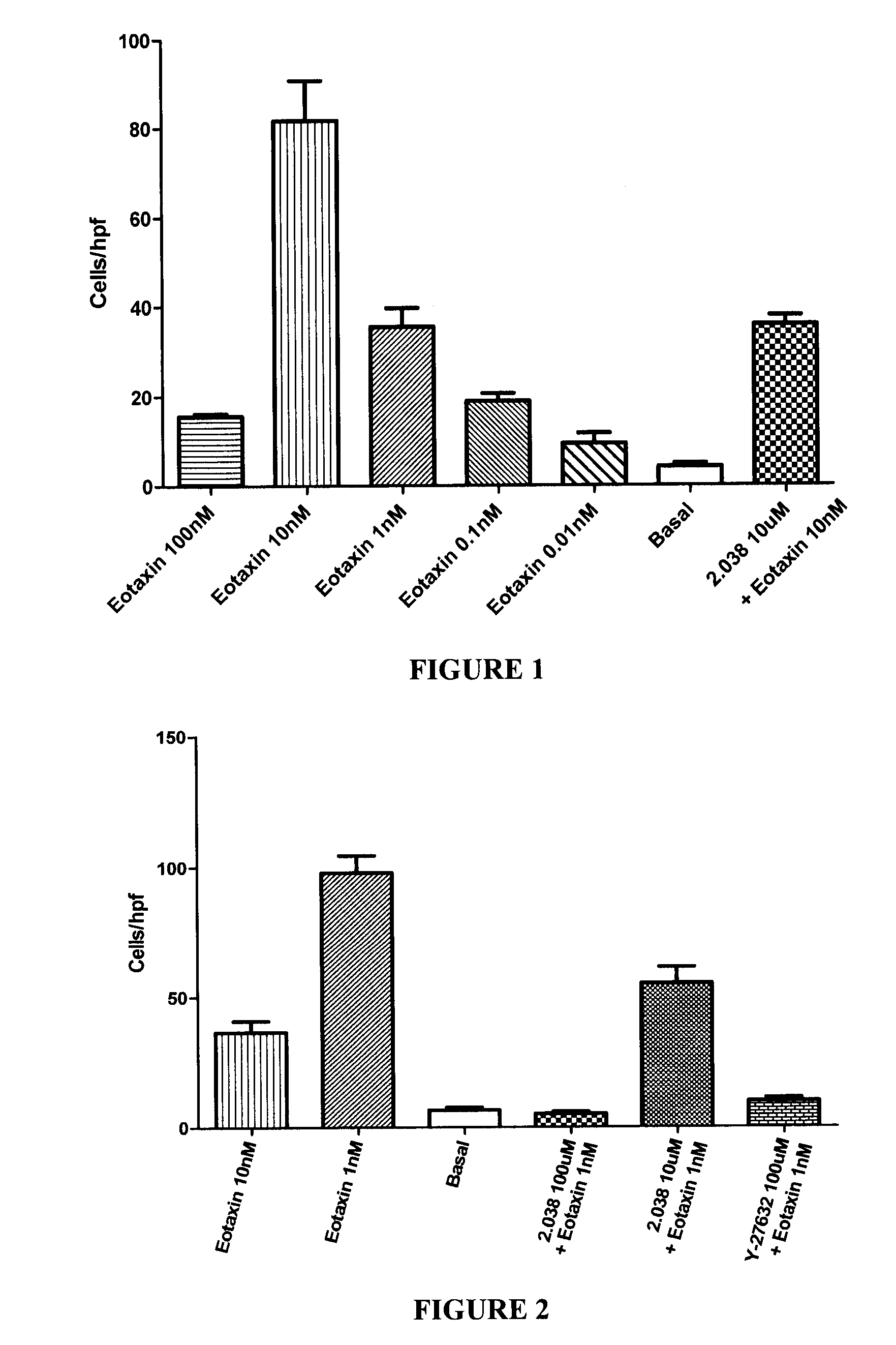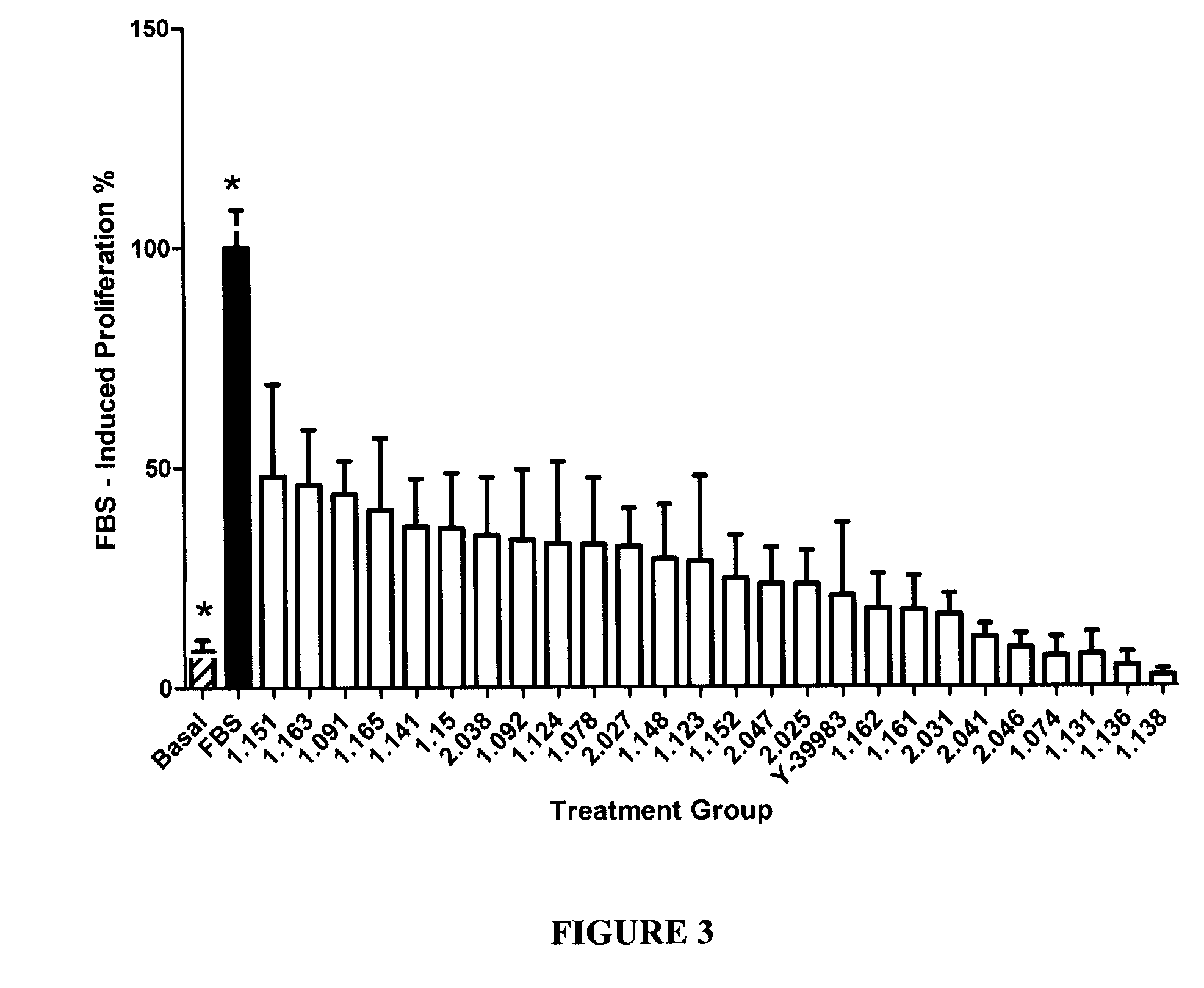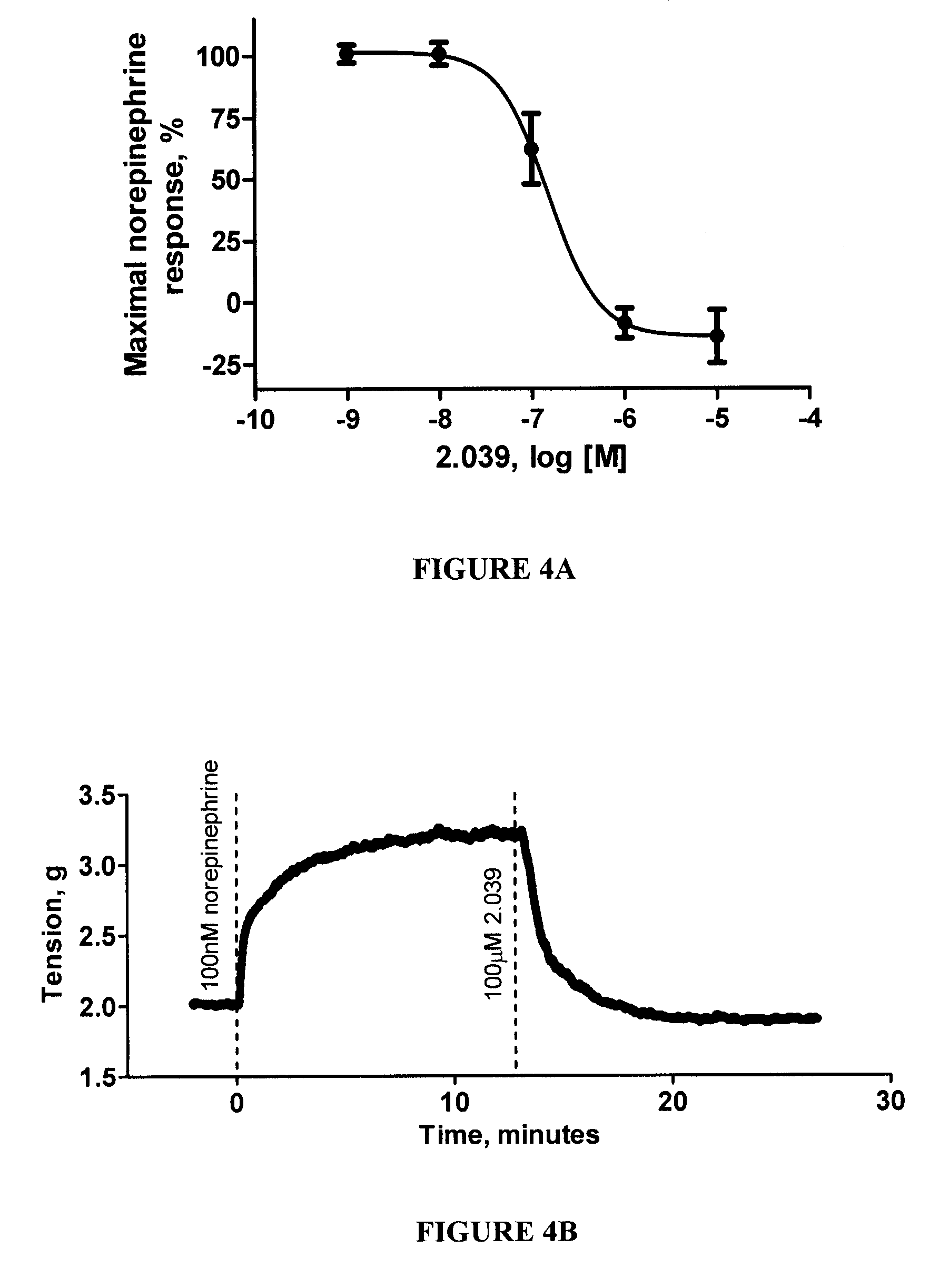Method for treating cardiovascular diseases using rho kinase inhibitor compounds
a technology of rho kinase inhibitor and cardiovascular disease, which is applied in the field of treating cardiovascular diseases using rho kinase inhibitor compounds, can solve the problems of coronary artery, mortality and morbidity in developed countries, and new evidence suggests a high risk of in-stent thrombosis
- Summary
- Abstract
- Description
- Claims
- Application Information
AI Technical Summary
Benefits of technology
Problems solved by technology
Method used
Image
Examples
example 1
Relevance:
[0225]This assay demonstrates a compound's ability to inhibit ROCK2 and ROCK1 in an in vitro setting using the isolated enzyme. Compounds having ROCK2 IC50 values on the order of 2 μM or below have been shown to possess efficacy in many studies using in vivo models of the disease processes described in this application.
Protocol
[0226]Inhibition of ROCK2 and ROCK1 activity was determined using the IMAP™ Screening Express Kit (Molecular Devices product number #8073). ROCK2 enzyme (Upstate / Chemicon #14-451), ROCK1 (Upstate / Chemicon #14-601) and Flourescein tagged substrate peptide Fl-AKRRRLSSLRA (Molecular Devices product number R7184) was pre-incubated with a test compound (a Formula I or II compound or other Rho kinase compound such as fasudil, H-1152, H7, Y-27632, Y-39983) for 5 minutes in buffer containing 10 mM Tris-HCl pH 7.2, 10 mM MgCl2, and 0.1% BSA. Following the pre-incubation, 10 μM ATP was added to initiate the reaction. After 60 minutes...
example 2
NIH / 3T3 Cell Morphology Assay
Relevance
[0229]The assay demonstrates that a compound's in vitro ROCK inhibition activity manifests itself in morphology changes, such as actin stress fiber disassembly and alteration in focal adhesions in intact cells leading to inhibition of acto-myosin driven cellular contraction. These morphology changes provide the basis for the beneficial pharmacological effects sought in the setting of the disease processes described in this application, specifically the disruption of the actin stress fibers and its impact on smooth muscle contractility; cell mobility (Howard et. al. The J. of Cell Biology 98:1265-1271, 1984); and endothelial and epithelial permeability (Stephens et al., Am. Rev. Respir. Dis. 137:4220-5, 1988 and Vandenbroucke et al., Ann. N. X Acad. Sci. 1123:134-145, 2008.)
Protocol
[0230]NIH / 3T3 cells were grown in DMEM-H containing glutamine and 10% Colorado Calf Serum. Cells were passaged regularly prior to reaching confluence. Eighteen to 24 h...
example 3
[0232]Neutrophils are recruited to sites of injury and can contribute to the pathogenic features of inflammation through generation of cytokines, reactive oxygen intermediates, elastolytic enzymes, metalloproteases, and myeloperoxidase. This assay is an in vitro assay of neutrophil chemotaxis that can be used to evaluate the ability of Rho Kinase inhibitor compounds of Formula I or II to inhibit the migration of human neutrophils.
[0233]Peripheral blood from healthy human volunteers was collected and the neutrophils were isolated by Ficoll-paque density centrifugation followed by dextran sedimentation and hypotonic lysis of the red blood cells. Neutrophil chemotaxis was assessed using a modified Boyden Chamber (Neuroprobe, 96-well) with a 3 μm pore polycarbonate membrane. The ability of the tested compounds to block chemotaxis induced by a 1 μM fMLP challenge during a one hour incubation at 37° C. with 5% CO2 was assessed in a dose response manner. The resu...
PUM
| Property | Measurement | Unit |
|---|---|---|
| mass index | aaaaa | aaaaa |
| size | aaaaa | aaaaa |
| size | aaaaa | aaaaa |
Abstract
Description
Claims
Application Information
 Login to View More
Login to View More - R&D
- Intellectual Property
- Life Sciences
- Materials
- Tech Scout
- Unparalleled Data Quality
- Higher Quality Content
- 60% Fewer Hallucinations
Browse by: Latest US Patents, China's latest patents, Technical Efficacy Thesaurus, Application Domain, Technology Topic, Popular Technical Reports.
© 2025 PatSnap. All rights reserved.Legal|Privacy policy|Modern Slavery Act Transparency Statement|Sitemap|About US| Contact US: help@patsnap.com



